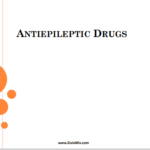DEVELOPING CLINICAL TRIAL PROTOCOLS,
INSTITUTIONAL REVIEW BOARD, INDEPENDENT ETHICS
COMMITTEE
Submitted to: Submitted by:
PROF. JAVED ALI Saniya Takkar
Department – Pharmaceutics Department – Pharmaceutics
School of pharmaceutical education and
School of pharmaceutical education and
research
research
DEVELOPING
CLINICAL TRIAL
PROTOCOLS
WHY DO WE NEED CLINICAL
TRIALS?
Clinical trials separate therapies which are true
advances from false leads and clinical impressions.
Importantly, they also identify risks of therapy.
Brief History Leading to Clinical Trials
◦ 1937 Liquid formulation of sulfa drug sold with diethylene glycol,
killing > 100
◦ 1938 (US FDC Act) mandated pre-market safety evaluation
◦ 1961 Case reports of thalidomide (approved in Europe) causing
server birth defects and deaths
◦ 1962 Legislation mandates FDA approval contingent on
“substantial evidence” of safety (first in animals and then
humans) in addition to efficacy
Protocol
Protocol- “ …a complete written description of, and scientific
rationale for, a research activity involving human subjects.”
(Protomechanics NIH)
3 general types of protocols:
◦ 1. Retrospective review- usually with data
◦ 2. Natural History study- may get tissue samples, DNA
◦ 3. Interventional – Phase I/II, Phase III, Phase IV
Clinical Trial Protocol Development
• Every clinical investigation begins with the development of a clinical protocol. The
protocol is a document that describes how a clinical trial will be conducted (the
objective(s), design, methodology, statistical considerations and organization of a
clinical trial,) and ensures the safety of the trial subjects and integrity of the data
collected. Protocol is described in the International Conference on Harmonisation of
Technical Requirements for Pharmaceuticals for Human Use (ICH) E6 Good Clinical
Practice: Consolidated Guidance
• A research protocol is a document that describes the background, rationale,
objectives, design, methodology, statistical considerations, and organization of a
clinical research project.
• The NIH provides many resources for protocol development to assist investigators in
writing and developing clinical research protocols that are in compliance with
regulatory/GCP requirements. Some NIH institutes have a mandatory requirement for
using their protocol template.
Clinical Trial Protocol
The protocol outlines the study plan for that trial. The plan must be carefully designed
to safeguard the health and safety of the participants, as well as answer specific
research question(s). The protocol describes:
the type of participant
the schedule of tests
Procedures
medications and dosages
the duration of the trial
and should include a definition of the ‘end of the trial’
Protocol Development
• Protocol development and complexity depends greatly upon
the type of clinical study being conducted. For instance,
interventional, multi-site, greater than minimal risk studies require
more protocol content than minimal risk and single site.
• When developing a successful study design and writing a
protocol, the researcher must address various essential
components- including the types of data being collected, (e.g.
safety, laboratory), data handling and record keeping, outcome
measures, how monitoring and reporting will occur, and data
analysis.
Who Reads Protocols?
◦Keep the “audience” in mind:
◦Other physicians
◦Nurses/CRA(Clinical Research
Associate)
◦IRB members
◦Scientific reviewers
Objectives
◦Objectives should be stated clearly
as hypotheses to be tested.
◦Each objective should have a
corresponding discussion in the
statistical section.
Background and Rationale
◦All protocols require a section detailing the
scientific rationale for a protocol and the
justification in medical and scientific literature for
the hypothesis being proposed.
◦ Introductory section should be as succinct as
possible and should be organized in a logical,
sequential flow.
Writing Eligibility Criteria
◦Eligibility criteria—stated as either exclusion or
inclusion criteria—define and limit the kinds of
patients that can participate in a clinical trial.
◦Reasons for imposing eligibility criteria can
include scientific rationales, safety concerns,
regulatory issues, and practical considerations.
◦Eligibility criteria should be straightforward and
unambiguous
Study Design
◦The study design section of the protocol
should contain a stepwise description of all
procedures required by the study.
◦A good study design section includes
sufficient information for the participating
site to develop a comprehensive clinical
pathway for study patients.
Safety
◦The Safety (or Adverse Events) section should
include:
◦Detailed information for reporting adverse
events, including reporting to the FDA and/or
the sponsor
◦Un-blinding processes (if applicable)
◦Lists of expected adverse events
Model Informed Consent
◦The Office of Human Subjects Research
recognizes 3 fundamental conditions for a valid
informed consent:
◦Disclosure of relevant information to
prospective research subjects
◦Comprehension of the information provided
◦Voluntary agreement of the subject, free from
coercion (forced participation)
Clinical Trials Protocol Template
Applicants conducting phase 2 or 3 clinical trials that require Investigational New
Drug applications (IND) applications can use a NIH-FDA template with instructional
and sample text to help write protocols. Use of this template is optional.
Purpose
To facilitate the development of clinical trial protocols that require a Food and Drug
Administration (FDA) Investigational New Drug (IND) or Investigational Device
Exemption (IDE) Application, the NIH and FDA collaboratively developed a Phase 2/3
Clinical Trial Protocol Template and an electronic protocol-writing tool to help
investigators think through the scientific basis of their assumptions, minimize
uncertainty in the interpretation of outcomes, and prevent loss of data.
Policy Guidelines & Implementation
The tool provides a suggested format for phase 2 and 3 clinical trials funded by NIH
that are being conducted under an FDA IND or IDE Application.
A common protocol structure and organization facilitates protocol review by
oversight entities.
Note that the use of the tool is voluntary and is not required for NIH applications or
contract proposals.
CDSCO Guidelines
• The Rules 122A, 122B and 122D, 122 DA,
122DAA, 122E of Drugs and Cosmetics Rules
and Appendix I, IA and VI of Schedule Y,
describe the information/data required for
approval of clinical trial and/or to import or
manufacture of new drug for marketing in
the country.
CDSCO GUIDELINES
◦Annexure A : Data Elements For Reporting Serious
Adverse Events Occurring In A Clinical Trial
◦Annexure-B : UNDERTAKING BY THE
INVESTIGATOR
◦ANNEXURE C : INFORMED CONSENT
◦ANNEXURE-D : STRUCTURE, CONTENTS AND
FORMAT FOR CLINICAL STUDY REPORTS
The Proposed Protocol For
Conducting The Clinical Trial
i. Title Page xi. Adverse Events (As per Annexure-
ii. Table of Contents A)
xii. Ethical Considerations
iii. Study Rationale
xiii. Study Monitoring and Supervision
iv. Study Objective(s) xiv. Investigational Product
Management
v. Study Design
xv. Data Analysis
vi. Study Population xvi. Undertaking by the Investigator (As
vii. Subject Eligibility per Annexure B)
xvii. Appendices: Annexure- C
viii. Study Assessments
ix. Study Conduct
x. Study Treatment
INSTITUTIONAL REVIEW
BOARD, INDEPENDENT
ETHICS COMMITTEE
IRB/EC in Clinical Trials
◦ The International Council on Harmonization (ICH) defines an
institutional review board (IRB) as a group formally designated to
protect the rights, safety and well-being of humans involved in a
clinical trial by reviewing all aspects of the trial and approving its
startup. IRBs can also be called independent ethics committees
(IECs).
◦ An IRB/IEC reviews the appropriateness of the clinical trial
protocol as well as the risks and benefits to study participants. It
ensures that clinical trial participants are exposed to minimal risks
in relation to any benefits that might result from the research.
◦An IRB/IEC:
◦ Reviews all study-related materials before and during the trial
◦ Must operate in accordance with national and/or local regulations, as well as with ICH
good clinical practices (GCPs) guidelines
◦ IRB/IEC Membership
◦ IRB/IEC members should be collectively qualified to review the scientific, medical and
ethical aspects of the trial.
◦ An IRB/IEC should have:
◦ At least five members
◦ Members with varying backgrounds
◦ At least one member must represent a non-scientific area (a lay member)
◦ At least one member must not be affiliated with the institution or the trial site (an
independent member)
◦ Competent members who are able to review and evaluate the science, medical
aspect and ethics of the proposed trial
IRB/IEC Responsibilities Before, During and After a Trial
Before a site is allowed to start enrolling patients in a clinical trial,
the IRB/IEC must review all study-related materials in an initial
review. The IRB/IEC also performs periodic reviews – called
continuing reviews – throughout the trial’s duration. Continuing
reviews may take place at least once a year and include the
entire trial, not just changes.
The IRB/IEC may also ask for additional information regarding
payments and compensation to study participants, as well as
the informed consent process.
Investigator Responsibilities for Ensuring Compliance
The principal investigator (PI) is responsible for ensuring
compliance with any IRB/IEC procedures or requirements. He or
she may deviate from the study protocol without prior IRB/IEC
approval only to eliminate immediate safety hazard to a study
participant.
INSTITUTIONAL
REVIEW BOARD
What is the Institutional Review Board
(IRB)?
◦ The Institutional Review Board (IRB) is an administrative body established to protect the
rights and welfare of human research subjects recruited to participate in research
activities conducted under the auspices of the institution with which it is affiliated.
◦ The IRB is charged with the responsibility of reviewing, prior to its initiation, all research
(whether funded or not) involving human participants. The IRB is concerned with
protecting the welfare, rights, and privacy of human subjects. The IRB has the authority
to approve, disapprove, monitor, and require modifications in all research activities
that fall within its jurisdiction as specified by both the federal regulations and
institutional policy. The IRB shall have at least five members of varying backgrounds in
order to provide complete and adequate review of human research and its
institutional, legal, scientific, and social implications. The Board will also include at least
one member who is not affiliated with the institution and one member who is not a
scientist. The IRB has several consultants who advise the Board and are periodically
involved in protocol review.
FDA Guidance for Institutional Review
Boards
◦ Under FDA regulations, an IRB is an appropriately constituted group that has been
formally designated to review and monitor biomedical research involving human
subjects. In accordance with FDA regulations, an IRB has the authority to approve,
require modifications in (to secure approval), or disapprove research. This group review
serves an important role in the protection of the rights and welfare of human research
subjects.
◦ The purpose of IRB review is to assure, both in advance and by periodic review, that
appropriate steps are taken to protect the rights and welfare of humans participating
as subjects in the research. To accomplish this purpose, IRBs use a group process to
review research protocols and related materials (e.g., informed consent documents
and investigator brochures) to ensure protection of the rights and welfare of human
subjects of research.
FDA Guidance for Institutional Review
Boards (CONTD)
◦ As published in the Federal Register on January 15, 2009, (74 FR 2358), 21 CFR Part 56,
Institutional Review Boards, was amended with regard to IRB registration (21 CFR
56.106). This amendment requires each IRB in the United States (U.S.) that reviews FDA-
regulated studies to register. IRB registration information is entered into an Internet-
based registration system maintained by the Department of Health and Human
Services (HHS)
◦ The fundamental purpose of IRB review of informed consent is to assure that the rights
and welfare of subjects are protected. A signed informed consent document is
evidence that the document has been provided to a prospective subject (and
presumably, explained) and that the subject has agreed to participate in the research.
IRB review of informed consent documents also ensures that the institution has
complied with applicable regulations.
Indian IRB
◦ The Central Drug Standards and Control Organization (CDSCO), amended the
Schedule Y, by issuing three amendments to introduce new compensation rules and
registration of IRBs functioning in the country.
◦ Central Drug Standards and Control Organization (CDSCO) has granted registration to
565 IRBs in the country, this means that at least on paper these IRBs are compliant to
the norms as of 2013.
◦ IRBs in India must have at least seven members in place of five members required in the
International Conference on Harmonization (ICH) region.
INDEPENDENT
ETHICS COMMITTEE
Four Basic Ethical Principles
◦Respect for Persons Application: Informed Consent
◦Beneficence Application: Assessment of Harms and
Benefits
◦Justice Application: Selection of Participants in
Research
◦Respect for Communities Application: Community
involvement and participation
RESPONSIBILITIES OF IEC
1.To protect the dignity , rights & well being of
patients.
2.Ensure a competent review of the protocol.
3.Advise on all aspects of welfare & safety.
4.Ensure scientific soundness of the proposal.
IEC MUMBAI
DATA
Sr. No. IEC assigned No. Title Name of PI Location
1. IEC/1/2000 A phase II study of Gemitabine, Paclitaxel and cisplatin in Dr. Purvish M. Tata Memorial
chemotherapy naïve FIGO stage III B and IV ovarian Parikh Hospital,
cancer Mumbai
2. IEC/2/2000 An open non comparative study of efficacy and safety of Dr. Purvish M. Tata Memorial
ketoprofen IV in the treatment of cancer pain Parikh Hospital,
Dr. L.J.D’Souza Mumbai
3. IEC/4/2001 A study of gynaecological morbidity and common mental Dr. Vikram Patel Goa
disorders in Goa
REFERENCE
• https://hub.ucsf.edu/protocol-development
• http://www.ct-toolkit.ac.uk/routemap/protocol-development/
• https://www.uth.edu/ctrc/trial-conduct/protocol-development.htm
• https://grants.nih.gov/policy/clinical-trials/protocol-template.htm
• https://blogs.fda.gov/fdavoice/index.php/2016/03/fda-and-nih-release-a-draft-clinical-trial-
protocol-template-for-public-comment/
• http://www.cdsco.nic.in/writereaddata/Guidance_for_New_Drug_Approval-23.07.2011.pdf
• http://ctep.cancer.gov/handbook/index.html
• https://www.fda.gov/RegulatoryInformation/Guidances/ucm126420.htm
• http://research.oregonstate.edu/irb/frequently-asked-questions/what-institutional-review-board-irb
• http://www.ppdi.com/Participate-In-Clinical-Trials/Become-an-Investigator/Institutional-Review-
Board
• https://www.ncbi.nlm.nih.gov/pmc/articles/PMC3980545/
• http://www.iecindia.org/project.htm










